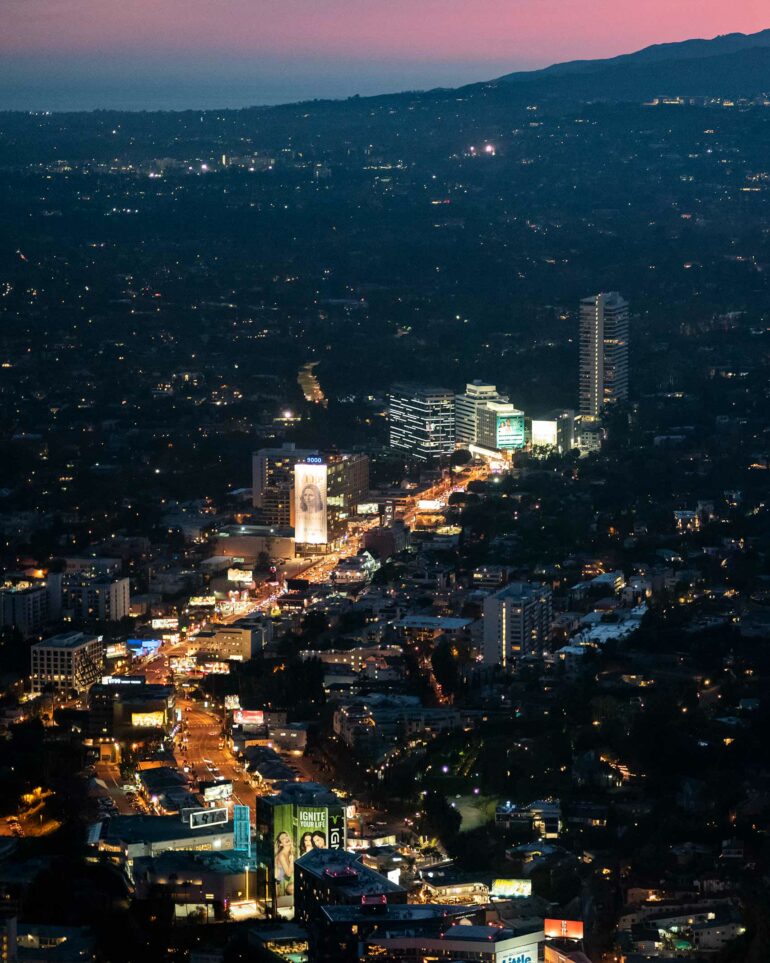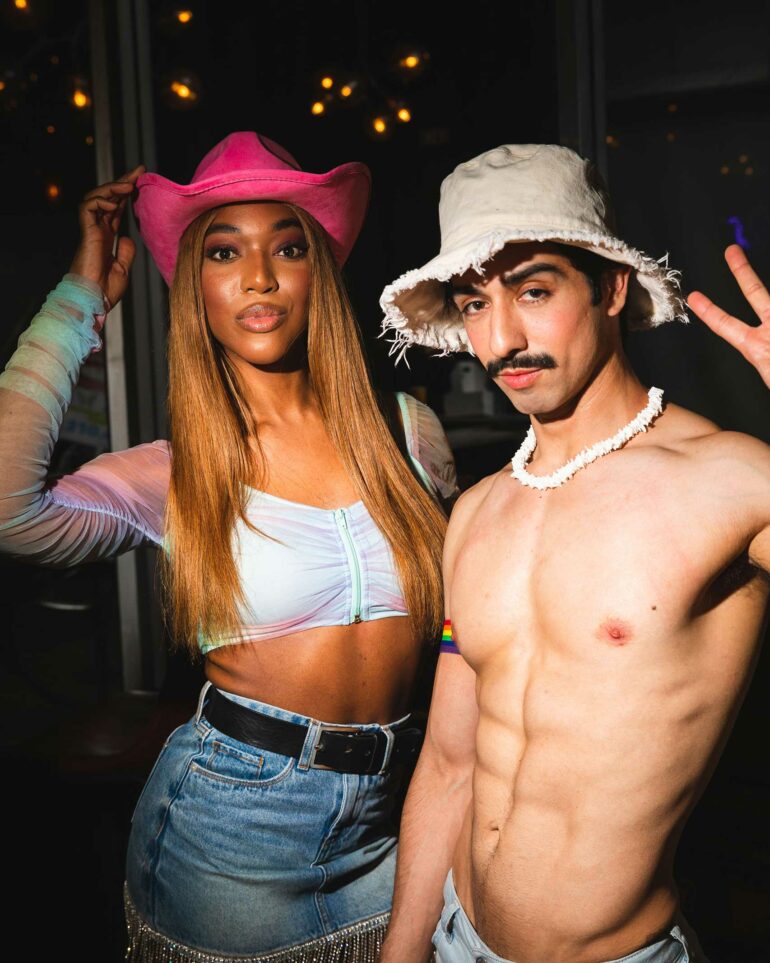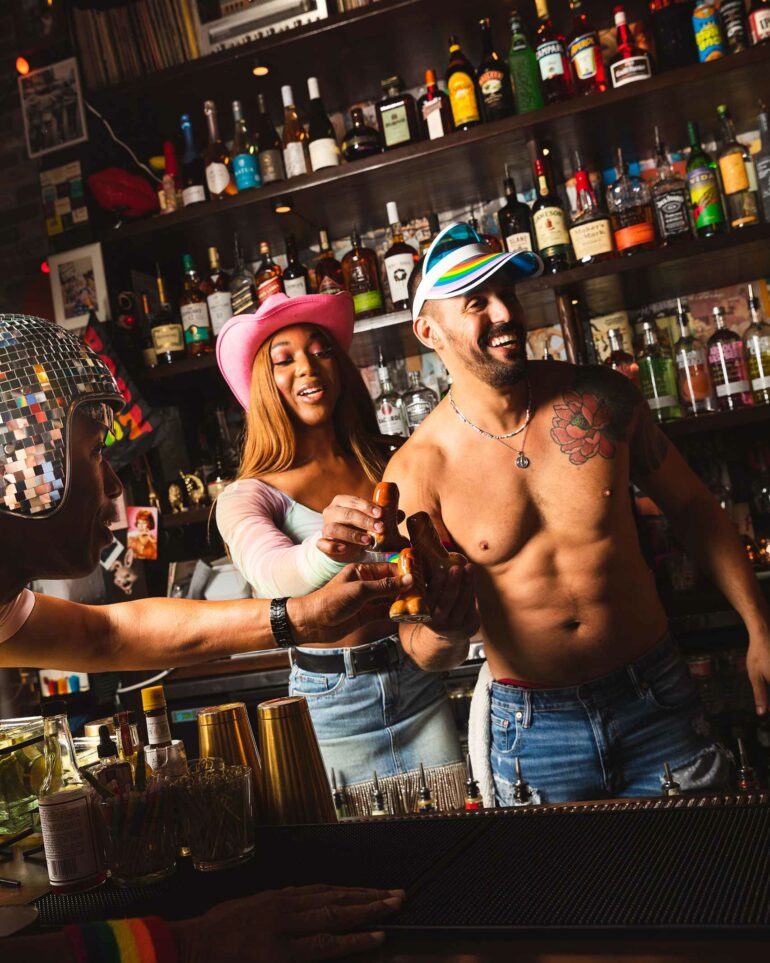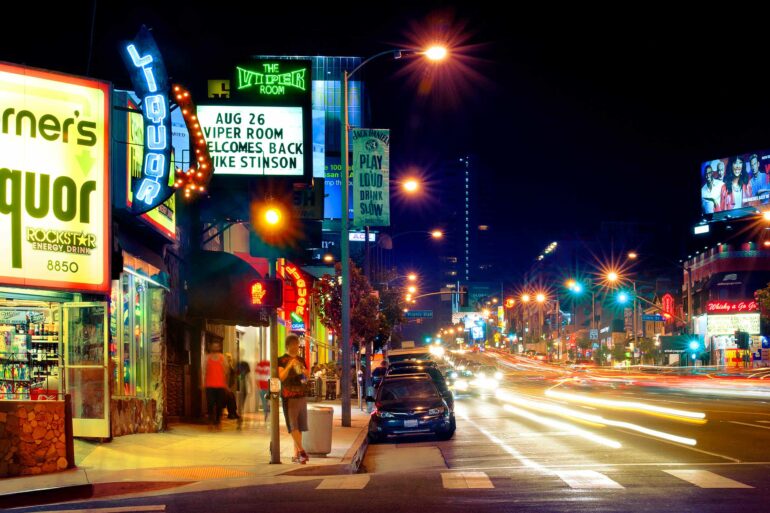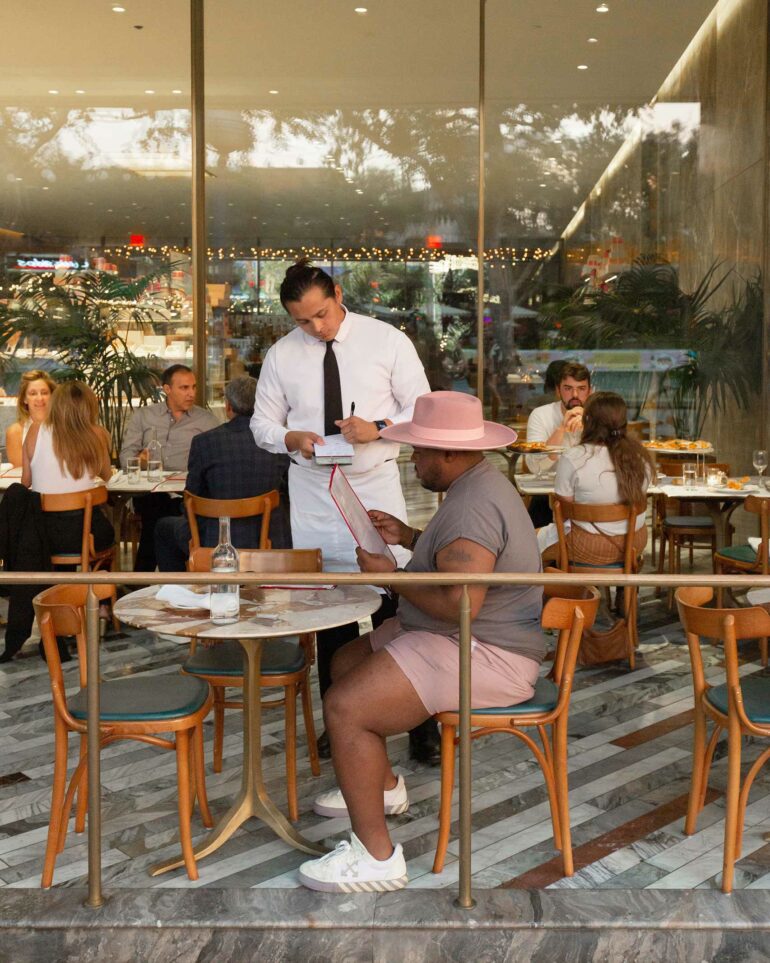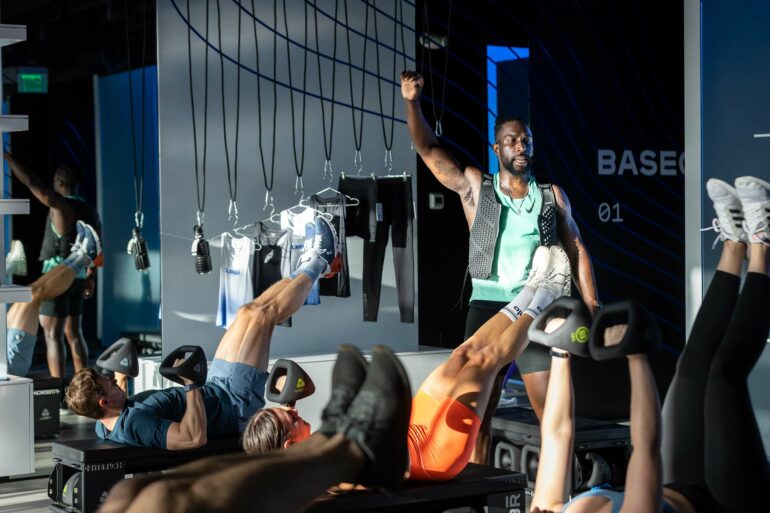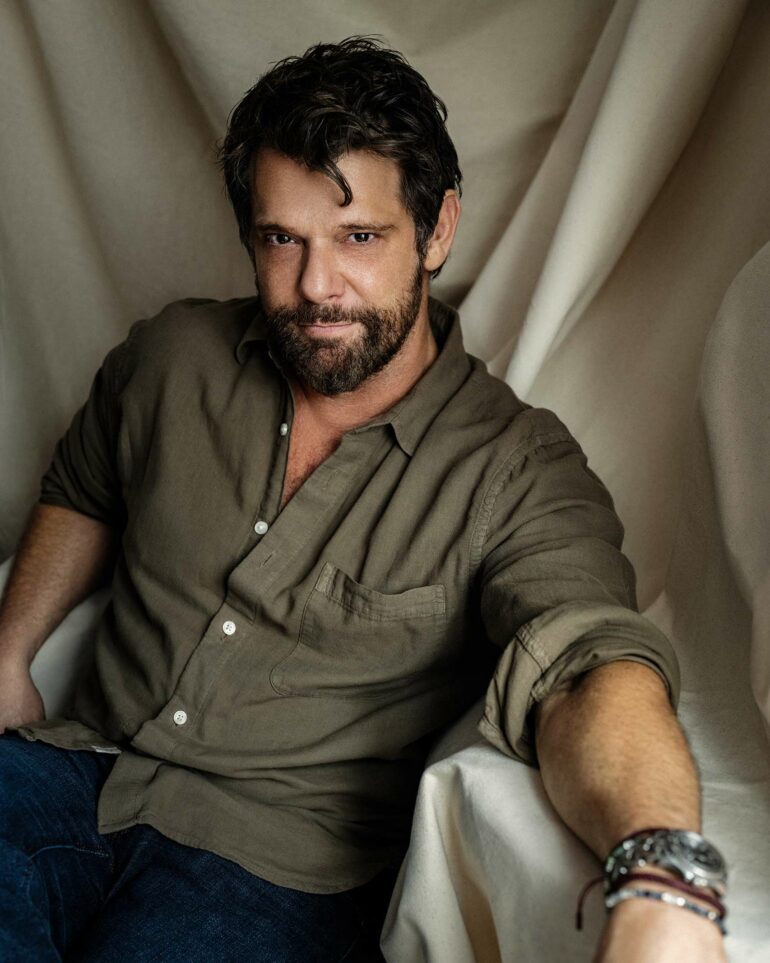Long a global megabrand for its polished bars and go-go boys, West Hollywood is outgrowing the gay-candy-shop stereotype – and the shadow of Covid – with new, more community-based manifestations of queer-centric creativity.
Throughout my adult life, I’ve always found my way back to West Hollywood, and revelled in this quirky, two square miles of city’s resilience as a community-centric bubble of queer joy. I’ve stumbled out of its decadent and indulgent watering holes tickled by its signature culture shock of polished glitz and wannabe glamour that seems an entire world – yet only 11 hours’ flying time – away from my home city London. In WeHo I walk everywhere and instinctively know where I’m going. Celebrities have become part of the furniture to me, and I’m no longer shocked at the price of an iced coffee, smoothie or kombucha. I regularly bump into old friends on the street. I genuinely adore it.
What I like most about WeHo is how different it is from the rest of LA – it’s unashamedly fun, spontaneous, offbeat, blithe even. Some say it’s pretentious and showy, but in my experience, West Hollywood has always been extremely relaxed, almost to the point of cannabis-gummy-induced stupor. I don’t think people here are striving hard to be on trend; more like they’re just trying to be on time.
Especially since the pandemic, what I’ve come to admire most about WeHo is its time-proven resilience. Creativity, innovation and evolution have always been at its core, but I’m impressed on my most recent visit by how well the city has bounced back from adversity, often in brighter, louder and more inclusive ways than before.
On the rainbow strip that is Santa Monica Boulevard, new takes on old ideas are having a moment. At Schmitty’s, West Hollywood’s newest queer bar, owner Jay Krymis (pictured, top right) is seeking to bring back the notion of a ‘neighbourhood bar’ (cue theme tune from Cheers). And while this may not seem a revolutionary concept, it’s quite a leap among the boulevard’s glut of high-camp, promoter-led, go-go boy-rich venues and sports bars. I don’t doubt that legions of LGBTQI+ people will continue to thrill to the strip’s signature idealised kid-in-a-gay-candyshop aesthetics, and hope they endure for ever. But there is room for something different. Sometimes – is the hunch Jay’s banking on – queers do want to go ‘where everybody knows your name’.
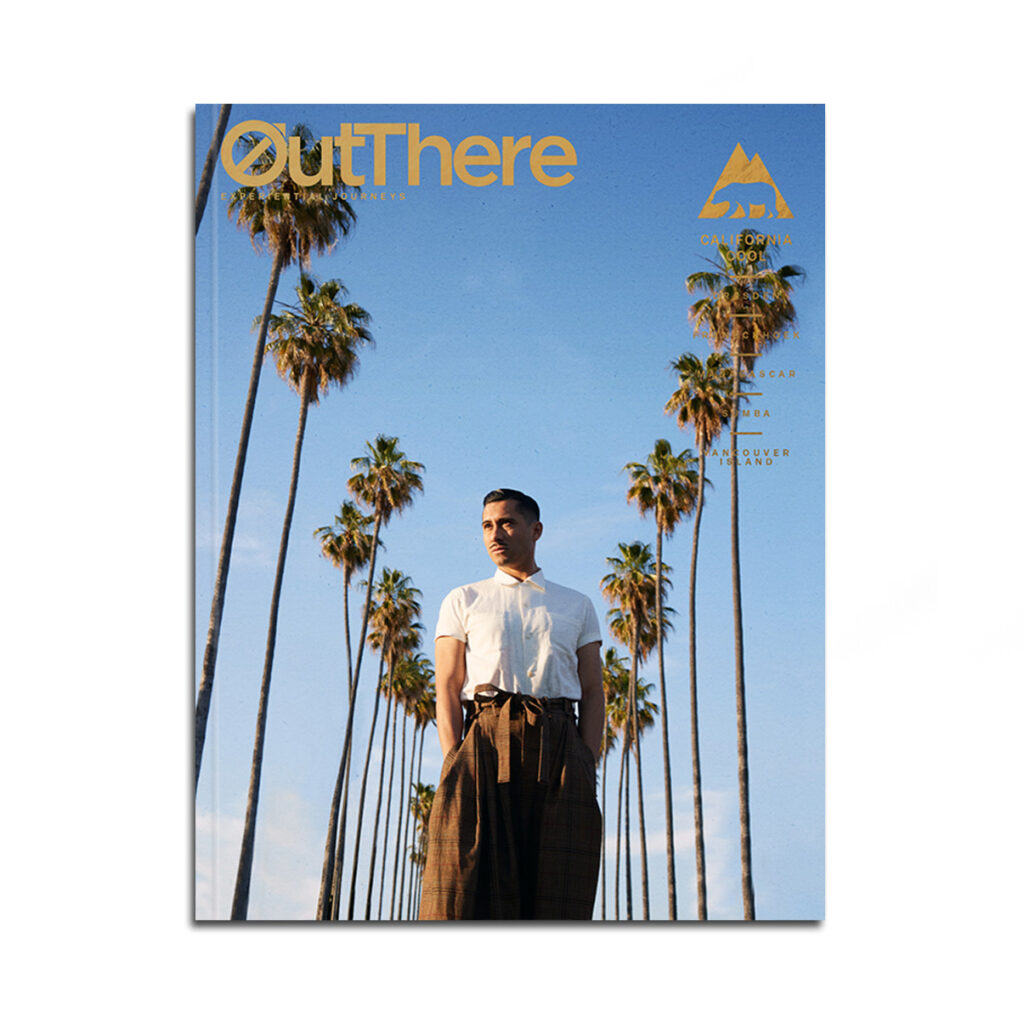
This story first appeared in The California Cool Issue, available in print and digital.
Subscribe today or purchase a back copy via our online shop.
Schmitty’s is an about-turn for Jay, who once owned the legendary Fubar just across the street, known for hosting high-octane, down-and-dirty events for gay men, and which shuttered for good during the pandemic. It signals a new direction for Jay’s career plan too. He’d been intent on being a full-time actor and part-time bar owner. Now, it’s the other way around, a switcheroo in an otherwise stereotypical ‘why I came to LA’ story.
Schmitty’s forgoes DJ booth and laser lights for an old piano adorned with stickers. It features quirky, tongue-in-cheek artwork and decor that celebrates queerness and queer history. And while it’s just six months old at the time of going to press, Jay wants it to look as if it has been here since the 1970s, perhaps even LA’s tribute to NYC’s Stonewall Inn. His clearest focus, however, is on attracting a diverse clientele and building a reputation as a meaningful, safe queer space that welcomes everyone.
Elsewhere on Santa Monica Boulevard is Bottega Louie, the West Hollywood outpost of Downtown’s adored restaurant, patisserie and gourmet market concept. I was first told how it would change LA’s dining scene back in 2017 when I interviewed David Cooley, founder and owner of WeHo LGBTQI+ nightlife institution The Abbey and a partner in Bottega Louie. David is said to have the Midas touch when it comes to hospitality and entertainment, but Bottega Louie’s long-anticipated opening was delayed for various reasons until 2020 – only to face the state of emergency declared because of Covid.
But all the stop-starts didn’t deter them, and the concept is now at last coming of age, serving delicious Italian-inspired food and baked goods to an up-for-it clientele there for everything from daytime Grindr coffee dates to celebration dinners to late-night sugar rushes, courtesy of the exquisite desserts. It’s a grand, bougie space – nearly 750 sq m/8,000 sq ft – and its double-height windows, oak-panelled walls and marble floor evoke the influence of designer and hotel impresario Ian Schrager.
Schrager himself continues to make his mark on the city – this time on Sunset Boulevard – with his inspiringly creative new West Hollywood EDITION hotel. This property also had the bad luck of opening when Covid put travel on hold, but is now making up for lost time. Its suites and spaces are sublime (find out more in our OutThere Recommends section), and its subterranean day spa is making major waves as the first luxury wellness retreat fusing holistic therapies with ecological wellbeing – with its CBD-oil massages the talk of the town. Schrager and his hotel co-mogul Ed Scheetz have also recently acquired The Standard Hollywood which closed in 2021, and will reopen it under Schrager’s PUBLIC brand – watch this space for updates.
“LGBTQI+ people migrate here in large numbers to escape marginalisation and thrive as part of a new, hopeful community. This tribe makes up 40 per cent of the city’s entire population”
Another hotel advocating wellness, with added social and environmental sustainability, is the 1 Hotel. It, too, opened in 2019, just before the pandemic hit and, despite a history of many iterations, including as The Jeremy Hotel and before that The James, the building’s latest beautiful incarnation feels here to stay, now in the hands of the socially conscious chain 1 Hotels, whose deeply rooted responsible ethos aligns perfectly with the West Hollywood mindset. Its wellness offerings are as popular as Edition’s, but this time come with British accents from Bamford Spa and include a high-tech FaceGym franchise.
Back on Santa Monica Boulevard, Studio CLMBR, a full-body, cardio-focused class, has its first branch outside Colorado. Great for travellers looking to sweat hard, the brand offers efficient 30- or 45-minute workouts of climbing to music in an experiential light and sound studio. This is resilience 101, and one of the hardest workouts I’ve ever done.
On the shopper’s paradise that is Melrose Avenue, things are looking up. When I visited in 2021, Covid’s effects seemed devastating. This once upscale retail mecca had turned tawdry, with many of its spaces vacant and unloved. Today, a striking physical regeneration of the area (including a $4m pedestrian improvement project) is revitalising the district into something better than it was pre-pandemic. New tenants, such as Soho Home, John Varvatos, Our Place, Gucci, The M Jewelers and Biologique Recherche, have opened flagships on the strip.
Across hospitality, food and drink, design and shopping, more than ever there’s a purposeful inventiveness and imagination in WeHo, driven by a spirit of not giving up. It’s an exciting haven for new ideas, and all that is culturally significant from the rest of the world has a licence to thrive here.
I wonder why this resilience is so entrenched here – and conclude that it’s down to West Hollywood’s residents. It’s no secret, after all, that people who come here from all over the world are chasing dreams of self-realisation and dazzling success. LGBTQI+ people migrate here in large numbers to escape marginalisation and thrive as part of a new, hopeful community. This tribe makes up 40 per cent of the city’s entire population, over four times more than the average across all other American cities. These are people who know things can get better, so long as they put their hearts and minds into it. So it’s no surprise that West Hollywood is firmly and fabulously back in action. And I’m thrilled.
Photography courtesy of Max Whittaker/Visit California, Sterling Reed Photography, Claude Vogel, Bottega Louie, and Studio CLMBR


